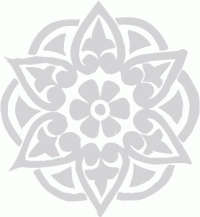

1. Herndon, Robert M. (2006). Handbook of Neurologic Rating Scales, second edition. Demos Medical Publishing, New York.
2. Taimni, I.K. (1972). The Science of Yoga. Theosophical Publishing House. Wheaton, IL.
3. Iyengar, B.K.S. (1979). Light on Yoga, revised edition, Schocken, New York, page 31.
4. Ibid, page 30. Taken from Hatha Yoga Pradipika, Chapter I, verses 64-66.
5. Ibid, page 44-45. Taken from Hatha Yoga Pradipika, Chapter 4, verse 30.
6. Ibid, page 53. From Sankaracharya Atma Satkam.
7. McKenzie, Robin, and Craig Kubey. (2001) 7 Steps to a Pain-Free Life: How to Rapidly Relieve Back and Neck Pain. Plume, New York.
8. Schatz, Mary Pullig. (1992) Back Care Basics: A Doctor’s Gentle Yoga Program for Back and Neck Pain Relief. Rodmell Press, Berkeley.
9. Ekman, Paul, Joseph J. Campos, Richard J. Davidson, and Frans B.M. de Waal. (2003). Emotions Inside Out. Annals of the New York Academy of Medicine, New York, Volume 1000.
10. Ramirez, Martin, and Michael Cabanac. (2003). “Pleasure: the common currency of emotions,” and Sullivan, Margaret W., David S. Bennett, and Michael Lewis, “Darwin’s view: Self-evaluative emotions as context-specific emotions.” In: Ekman, Paul, Joseph J. Campos, Richard J. Davidson, and Frans B.M. de Waal, Emotions Inside Out. Annals of the New York Academy of Medicine, New York, Volume 1000: 293-295 and 304-308, respectively.
11. Higgins, E.T. (1977). “Beyond pleasure and pain.” American Psychologist, 52: 1280-1300.
12. Buonomano D.V., and M.M. Merzenich. (1995) “Temporal information transformed into a spatial code by a network with realistic properties.” Science 267:1028-1030.
13. H. Cheng, Y. Cao, and L. Olson. (1996). “Spinal cord repair in adult paraplegic rats: Partial restoration of hind limb function.” Science 273: 510-513; W. Young. (1996). “Spinal cord regeneration.” Science 273: 451; and M.E. Schwab and D. Bartholdi. (1996). “Degeneration and regeneration of axons in the lesioned spinal cord.” Physiological Reviews 76(2): 319-370.
14. Jones, Edward G. (ed.) (1991). Cajal’s Degeneration and Regeneration of the Nervous System, Volume 5. Raoul M. May, translator. Oxford University Press, New York.
15. Roth, Jurgen, and Berger, E.G. (eds.). (1997). The Golgi Apparatus. Birkhauser, Cambridge; Sterr A., S. Freivogel, and A. Voss. “Exploring a repetitive training regime for upper limb hemiparesis in an in-patient setting: A report on three case studies,” Brain Injury, 22:1093-1107; Sterr A, T. Elbert, I. Berthold, S. Kölbel, and E. Taub, “Longer versus shorter daily constraint induced movement therapy of chronic hemiparesis: An exploratory study,” Archives of Physical Medicine and Rehabilitation, 83, 1374-1377; Sterr A., S. Freivogel, and D. Schmalohr, “Neurobehavioral aspects of recovery: Assessment of the learned non-use phenomenon in hemiparetic adolescents,” Archives of Physical Medicine and Rehabilitation, 83, 1726-1733; and Sterr A., D. Schmalohr, S. Kölbel, and S. Freivogel, “Functional reorganization of motor areas following forced-use rehabilitation training in hemiparetic patients: A TMS study,” Biomedical Engineering, 46: 102-108.
16. Kilgard M.P., and M.M. Merzenich. (1998). Cortical map reorganization enabled by nucleus basalis activity. Science 279:1714-1718.
17. Edelman, Gerald. (1987). Neural Darwinism. Basic Books, New York.
18. Oken, Barry. (2003). “Yoga reduces fatigue in multiple sclerosis.” Presented at the American Academy of Neurology, Honolulu, Hawaii, April 3, 2003.
19. Christopher Reeves. (1998). “Reeve’s special night raiseshope,” USA Today, February 3, 1998; W. Young. (1996). “Spinal cord regeneration.” Science 273: 451; Schwab, M.E., and D. Bartholdi. (1996). “Degeneration and regeneration of axons in the lesioned spinal cord.” Physiological Reviews 76(2): 319-370.
20. Lazar S.W., C.E. Kerr, R.H. Wasserman, J.R. Gray, D.N. Greve, M.T. Treadway, M. McGarve, B.T. Quinn, J.A. Dusek, H. Benson, S.L. Rauch, C.I. Moore, and B. Fischl. (2005). “Meditation experience is associated with increased cortical thickness.” Neuroreport, Nov 28; 16(17): 1893-1897.
21. Telles S, B.H. Hanumanthaiah, R. Nagarathna, H.R. Nagendra. (1994). “Plasticity of motor control systems demonstrated by yoga training.” Indian Journal of Physiology and Pharmacology, April; 38(2): 143-144.
22. Stefano, G.B., T. Esch, P. Cadet, W. Zhu, K. Mantione, and H. Benson. (2003). “Endocannabinoids as autoregulatory signaling molecules: Coupling to nitric oxide and a possible association with the relaxation response.” Medical Science Monitor April; 9(4) RA 63-75.
23. Cailliet, Renee (1997). Foot and Ankle Pain. F.A. Davis, Philadelphia.
24. Vedel, J.P., and J. Mouillac-Baudevin. (1969). Etude fonctionelle du controle de l’activite des fibres fusimotrices dynamiaques et statiques par les formations reticules mesencephalique, pontique et bulbaire chez le chat. Experimental Brain Research 9: 325-345.
25. Granit, R., and B. Holmgren. (1955). “Two pathways from brain stem to gamma ventral horn cells.” Acta Physiologica Scandinavica 35: 9-108.
26. Granit, R. (1955). Receptors and Sensory Perception. Yale University Press, New Haven.
27. Ellaway, P.H., and J.R. Trott. (1978). “Autogenic reflex action onto gamma motoneurons by stretch to triceps surae in the decerebrated cat.” Journal of Physiology (London) 276: 49-76.
28. Gurfunkel, V.S., M.I. Lipshits, S. Mori, E.V. Popov. (1976). “The state of stretch reflex during quiet standing in man.” Progress in Brain Research 44: 473-486.
29. Wittgenstein, Ludwig. (2001). Philosophical Investigations. G.E.M. Anscombe, translator. 50th Anniversary Commemorative Edition. Basil Blackwell, Oxford.
30. Lanyon, L.E. (1989). “Strain-related bone modeling and remodeling.” Topics in Geriatric Rehabilitation 4(3) 13-24.
31. Pead, M.J., R. Suswillo, T.L. Skerry, S. Vedi, and L.E. Lanyon. (1988). “Increased 3H uridine levels in osteocytes following a short period of dynamic bone loading in vivo.” Calcified Tissue International 43: 92-97.
32. Nathanson, Donald L. (1992). Shame and Pride. W.W. Norton, New York.